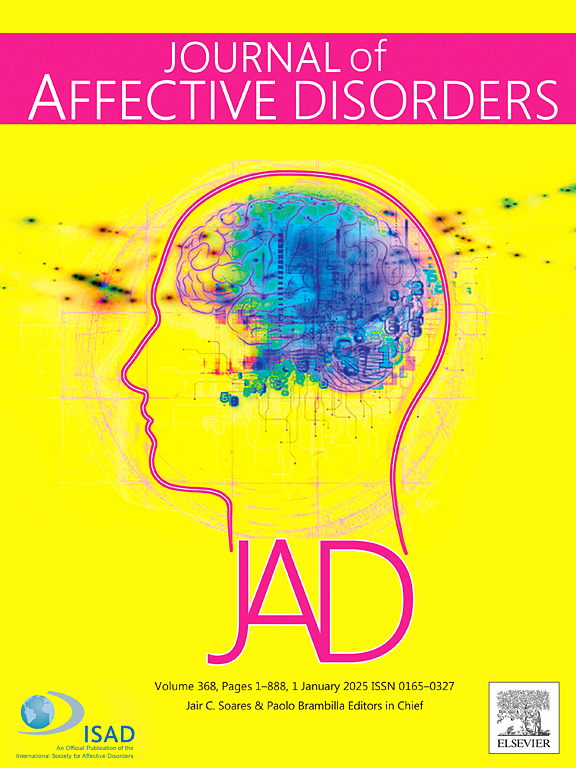The effects of six antidepressants on electrolytes, hepatic and renal function, and glycolipid metabolism in patients with major depressive disorder
IF 4.9
2区 医学
Q1 CLINICAL NEUROLOGY
引用次数: 0
Abstract
Background
Most antidepressants with similar pharmacological characteristics exhibit comparable therapeutic efficacy but differ in side effects. Therefore, we used a retrospective design to compare biochemical changes induced by six antidepressants and identify differences among them.
Methods
Case records from 1706 hospitalized patients with major depressive disorder (MDD) receiving antidepressant monotherapy were divided into six groups based on the specific antidepressants used: paroxetine, sertraline, fluoxetine, escitalopram, venlafaxine, and duloxetine. Electrolytes, hepatic and renal function, body weight, and glycolipid metabolism were assessed at baseline and 2 weeks post-antidepressant initiation. Paired analysis was used for comparing the changes prior to and after administration within each group, and analysis of covariance was used for evaluating the distinctions among the six groups.
Results
After 2 weeks of treatment, significant decreases in serum sodium and chloride levels were observed with venlafaxine, duloxetine, and fluoxetine, while potassium, phosphorus, and carbon dioxide concentrations tended to increase across all six antidepressants. In terms of hepatic indicators, these antidepressants significantly elevated alanine aminotransferase (ALT), aspartate aminotransferase (AST), and γ-glutamyl transpeptidase (GGT) levels, with duloxetine showing the most pronounced changes from baseline, while decreasing total and direct bilirubin. Sertraline effectively reduced uric acid, although changes in renal indicators were mild with other antidepressants. Notably, these antidepressants were associated with an unfavorable lipid profile, particularly elevated triglycerides and cholesterol, but they lowered blood glucose during the acute phase.
Limitation
Residual confounding may indirectly influence the retrospective outcomes.
Conclusion
Early biochemical changes can distinguish differences among antidepressants and guide individualized medication.
求助全文
约1分钟内获得全文
求助全文
来源期刊

Journal of affective disorders
医学-精神病学
CiteScore
10.90
自引率
6.10%
发文量
1319
审稿时长
9.3 weeks
期刊介绍:
The Journal of Affective Disorders publishes papers concerned with affective disorders in the widest sense: depression, mania, mood spectrum, emotions and personality, anxiety and stress. It is interdisciplinary and aims to bring together different approaches for a diverse readership. Top quality papers will be accepted dealing with any aspect of affective disorders, including neuroimaging, cognitive neurosciences, genetics, molecular biology, experimental and clinical neurosciences, pharmacology, neuroimmunoendocrinology, intervention and treatment trials.
 求助内容:
求助内容: 应助结果提醒方式:
应助结果提醒方式:


